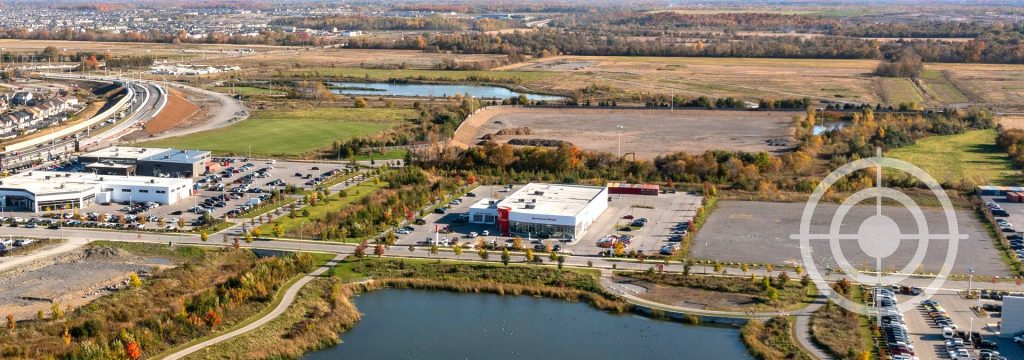Using Equity to Develop Raw Land
For investors and luxury property owners with strong equity positions, the landscape of opportunity has shifted. While traditional investments still hold value, many are now looking beyond the expected and toward untapped potential. One path gaining renewed interest is the strategic acquisition and development of raw land.
It’s not a quick flip or a short-term play. Developing raw land requires vision, patience, and a clear understanding of market dynamics. But for those with the right resources and a long-term outlook, it can result in powerful returns and meaningful portfolio growth.
The Case for Land Development
Raw land has always represented a blank canvas. Whether it’s a parcel on the edge of an expanding suburb, a tract near a transportation corridor, or acreage in a region undergoing rezoning, land offers flexibility and promise. Unlike built-out properties, land is unencumbered by structures, tenants, or existing use restrictions that limit potential. With the right entitlement strategy and development plan, it can be molded to fit a wide variety of needs – residential, commercial, or mixed-use.
In today’s market, that kind of adaptability matters. Demand for housing continues to outpace supply in many regions, especially in areas where population growth, infrastructure improvements, and remote work flexibility are driving new migration patterns. Meanwhile, rising construction costs and regulatory hurdles make infill development more complex. Raw land, especially in the path of growth, offers a cleaner starting point with potentially fewer constraints.
Tapping Into Equity for Growth
Owners of high-value properties, particularly luxury homes and commercial assets, are uniquely positioned to take advantage of this opportunity. With significant equity built up, often through years of appreciation, these individuals can unlock capital without liquidating core holdings. This is typically done through a cash-out refinance, a private loan, or other equity-based financing solutions.
The capital released through these channels can then be directed toward the purchase of land and early-stage development activities such as feasibility studies, zoning applications, environmental assessments, and infrastructure planning. It’s a way of using existing success to fuel the next stage of growth.
For many, this approach aligns with broader wealth-building strategies. Instead of letting equity sit idle, it is being put to work in a manner that has the potential to significantly increase overall portfolio value. And because land is a tangible, appreciating asset, it provides a sense of stability even when broader markets become volatile.

Targeting the Right Markets
Location remains critical when it comes to land development. Not all raw land is created equal, and the key is identifying parcels in areas with real momentum behind them.
Emerging suburban markets are attracting attention, particularly those near major metros that are seeing population spillover. Factors such as access to transportation, school quality, and future infrastructure plans can all influence the desirability and eventual value of the land. Likewise, commercial corridors in areas undergoing revitalization can offer compelling upside if development is timed correctly.
Some investors focus on land that is not yet zoned for its intended use but shows signs of shifting municipal priorities. With a proactive entitlement approach, these parcels can yield substantial returns once rezoned or entitled. Others look for land adjacent to large-scale developments or institutional investments, banking on the rising tide effect to lift their own values.
In all cases, due diligence is critical. Working with land planners, civil engineers, local officials, and experienced development consultants is essential to understanding both the opportunities and potential limitations of a site.
Managing Risk and Timelines
Developing land isn’t without its challenges. It takes time. Entitlements can be unpredictable, and construction timelines are often affected by external variables. This is why it’s considered a long-term strategy rather than a short-term win.
However, investors with adequate liquidity and a thoughtful timeline can manage this risk effectively. By staging capital deployment and working with funding partners who understand the nature of development, the process can be structured in a way that reduces pressure and preserves flexibility.
Some investors also pursue joint ventures with experienced developers, contributing capital while leveraging the operational expertise of their partners. This structure allows them to participate in upside while mitigating direct risk and management responsibility.
A Shift in Strategy
The move toward developing raw land reflects a broader shift among seasoned investors and luxury homeowners. Rather than simply holding assets or reinvesting in traditional vehicles, many are now focused on control, customization, and long-term value creation.
Equity is no longer seen as something to sit on. It’s a tool. A resource. And when used strategically, it can open doors to opportunities that are not only profitable, but also aligned with personal and financial goals.
Final Thoughts
In a market where volatility is rising and conventional plays are being re-evaluated, developing raw land stands out as a path for those willing to take the longer view. For those with the resources and appetite for growth, it’s not just about buying dirt, it’s about shaping what comes next.
Equity can do more than sit on a balance sheet. It can move, build, and grow. For those ready to act, the opportunity is already taking shape on the horizon.
